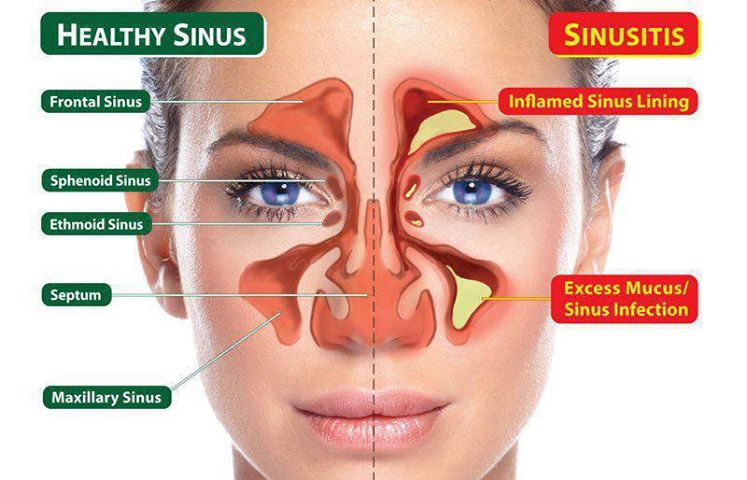No need to take notes in this two part series. Simply print it out because we’re about to reveal all.
Off the top, sinusitis is when the lining of the paranasal sinuses swells-up. Scratching your head with the term paranasal sinuses. Let’s go Wikipedia to explain:
“Paranasal sinuses are a group of four paired air-filled spaces that surround the nasal cavity (maxillary sinuses), above the eyes (frontal sinuses), between the eyes (ethmoid sinuses), and behind the ethmoids (sphenoid sinuses). The sinuses are named for the facial bones in which they are located.”

Now that we’re on the same page, gather around the campfire, kids. Get ready for the bullet-barrage we promised.
A Couple of Quick Reminders
Don’t wanna go too egghead on you, but a part of your behind-the-scenes plumbing is mucus. Rarely will we at ENT Center of Austin see a patient without an accompanying disease we affectionately called rhinitis or rhinosinusitis .
Got it? Rhinosinusitis we mean.
Well, you’re not alone. An estimated 35-million people per year in the United States come down with this disease. Translated, in America alone, close to 16-million folks visit an ENT specialist every year because of it. The ones that don’t — as we’ll explain in Part 2 — risk some serious, bad stuff.
How Do I Know If I’m Stuck With This?
In acute cases of people suffering from sinusitis they may experience:
- Persistent coughing.
- Facial pain.
- Signs that linger around for a week or more after you begin to experience any upper respiratory symptoms.
- Expect that after around after 10 days — after things seem to get better — the symptoms of acute rhinosinusitis will get worse. Call us.
- A clogged nose.
- Postnasal discharge. As we mentioned before, mucus starts flowing.
- You feel a pain over your cheek that streams-out to your teeth. You’ll especially notice this when you bend down.
- Your cheeks, eyelids and nose appear more red than they should.
So How Do We Treat It?
It’s a matter of management. Just a simple run-down of a couple of general steps that will be taken when you visit the ENT Center of Austin:
- But we will need to drain your sinuses. We may have to do some puncturing and irrigate the passageways.
- We’ll put you on an antibiotic regiment for a couple of weeks.
What Will You Do at Home After Treatment Begins?
Well, we recommend the following steps. Some will cost you a little money. Other solutions will include a lifestyle change. On the lifestyle matter, you should be doing these things whether you have sinusitis or not. It’s common sense. Regardless, here’s the reveal:
- Quit smoking. Here’s your excuse.
- Eat food that will balance your nutritional needs.
- Go out and purchase a vaporizer or a device that throws some moisture in the air.
- Place a warm compress on your nasal area.
- Drink a lot of water. Soda won’t do. Water, period.
- Taking something like acetaminophen to relieve pain.
So, go ahead and print this out. That way you’ll have at-the-ready the symptoms and what you can expect. Come back next time for Part 2 of this series. That’s when you’ll find out that sinusitis in nothing to sneeze at. Can really become pretty scary if left untreated.
Image Source: ilovemedicalprofession

